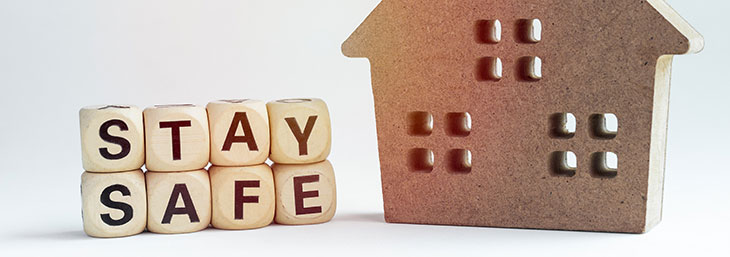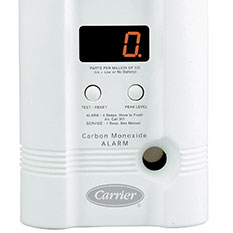
Posted: April 19, 2021 at 8:40 am
By: Lakes Region HVAC
You may be aware of the dangers of carbon monoxide poisoning and what a concern it can be to the well-being of you and your family. But do you know how to prevent it?
Let's begin by looking at what exactly carbon monoxide is and why it is such a danger.

CO is a collection of molecules, each comprised of one part carbon and one part oxygen, undetectable without a sensor due to its invisibility and lack of smell. Carbon monoxide is created when carbon fuels such as natural gas, oil, wood and gasoline fail to burn entirely.
When these fuels burn in an open space with ventilation, they are harmless. But they become a risk when the CO is expelled into confined spaces. If your home isn’t properly ventilated, this could become a serious issue. Every year, at least 430 people die in the United States and approximately 50,000 people visit hospital emergency rooms from CO poisoning.
While these statistics are alarming, there are ways to prevent and detect CO from becoming a danger in your home.
The first step is to have an expert come to your home and assess your heating and cooling system’s ventilation system. If your fuel-burning equipment is not ventilating correctly, we’ll need to adjust this immediately.
Proper ventilation is achievable by installing either an exhaust, supply, or balanced ventilation system. Or we may suggest an energy recovery or heat recovery ventilator.
Other appliances in your home can also leak carbon monoxide: gas stoves and dryers, fireplace inserts and water heaters. If any of these units are not working properly, have them immediately checked and serviced.
Of course, it’s possible you may never know a component is malfunctioning, which is why CO alarms are so important.
It’s crucial to have a CO detection device — or devices — placed inside your home. They are small, affordable and easy to install. If you already have a professional security or fire alarm installed in the house, it is possible carbon monoxide alarms are part of the package…check with your provider to be sure.
For the best protection, you can have all of your carbon monoxide alarms interconnected so that when one sensor goes off, they all sound an alarm. That may not always be possible, so there are other options, such as battery-powered alarms available online or from home stores.
If you’re installing battery-powered detectors yourself, it’s important to cover each level of your home, in central locations, as well as outside each sleeping area. If there are any fuel-burning components in the basement or attic, make sure detectors are placed near those as well. Purchase alarms that are certified by a recognized testing laboratory and be sure to follow the manufacturer's instructions for the placement and mounting of the detectors.
Once installed, you should test your detectors regularly to ensure that they are working correctly. If your alarm has replaceable batteries, you should change them at least every six months. Carbon monoxide detectors have a lifespan of about six years, so it's important to mark your calendar for replacement. Don’t let it go for decades!
Another tip: never operate a generator, gas grill or, especially, a car inside a closed garage or other confined space. They emit carbon monoxide in large quantities. And even when these items are outside, keep them at least 20 feet away from an open window, door, or vent leading inside.
If this article is useful to you, or if you know someone who can benefit from it, please Share it.
Have another question? Contact the Lakes Region team, and we’ll find your solution.
Our clients are homeowners, small business owners, and corporations—and one could be you by calling 603-286-2290 or emailing info@lrhvac.com.
Lakes Region’s expert service technicians and installers are trained in the latest advancements in heating and cooling technologies. We'll help you select the correct comfort system for your home, ensuring that your equipment operates at the highest efficiency — giving you the lowest monthly operating cost.
Visit our website.
LRHVAC’s office hours: Monday - Friday
7:30-4:30
Phone: 603-286-2290
Mail: 86 Bay Hill Rd., Northfield, NH 03276
Email:
Email us